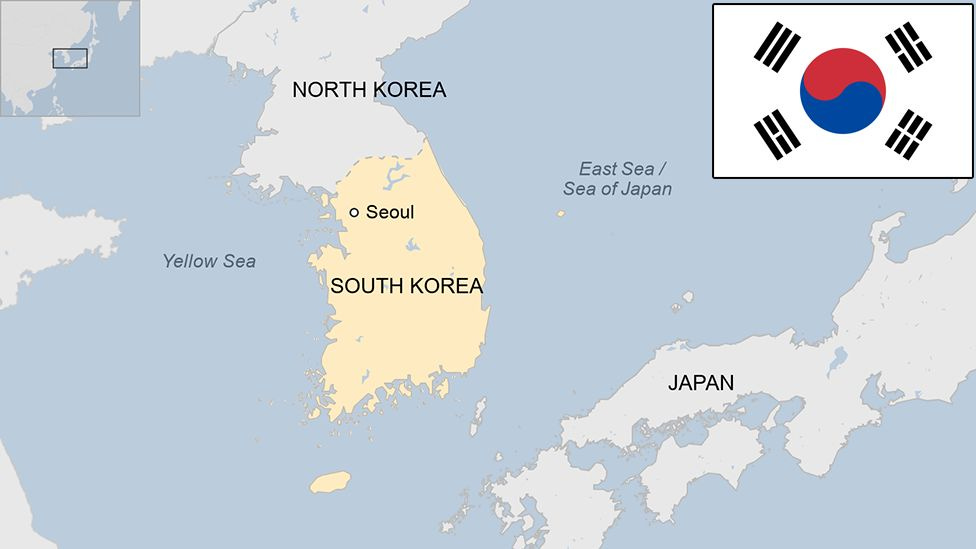Ireland’s Demographics - the Mother of All Problems
Ireland’s falling birth rate will have major social and economic implications
Ireland is facing a financial crisis that parallels the 2008 banking crisis.
The country's demographics are on the brink of a catastrophic change, as the number of pensioners relative to workers is expected to increase dramatically in the coming years.
Consumer expert Daragh Cassidy from Bonkers.ie warns that many people seem to have their heads in the sand about Ireland's demographic time bomb.
According to the Central Statistics Office (CSO), the current ratio of working-age people to those over 65 is 5:1. However, by 2051, this ratio is projected to decline significantly to only 2.3 working-age people for every person aged 65 and over.
“Unless changes to the pension system are made, the impact this would have on workers would be huge. We can expect to be paying much higher rates of PRSI and all sorts of other taxes to pay for it,” says Cassidy.
The recent government announcement that the pension age will remain at 66, against the recommendation of the Commission on Pensions for an increase in the retirement age, will further raise costs for workers and businesses.
Starting from October, Irish employers and employees will experience five consecutive PRSI pay hikes. This means that the average employee will need to pay an extra €48 per year. While workers will be paying more in PRSI, Cassidy clarifies that this does not guarantee sufficient funds for their own retirement: “Many people make the mistake of thinking all the PRSI and tax they currently pay is set aside for their own pension and that the money is being locked away in a pot somewhere… It’s used to pay today’s pensioners.”
To avoid this ticking time bomb, Cassidy suggests increasing the pension age and reforming the pensions system.
“The entire political class is deluding itself if it thinks it can keep the age at 66 indefinitely while life expectancy continues to creep higher and the number of workers goes lower.”
He mentions the government's consideration of an auto-enrolment scheme, where employers would contribute 6 per cent to an employee's pension fund, but notes that other countries have higher contribution rates, such as Australia's 11 per cent. Additionally, employers would have ten years to phase in the full 6 per cent contribution.
Edgar Morgonroth, Professor of Economics at DCU, believes that although inward migration can contribute to the labour force, the pension age will ultimately need to increase as pensioners live longer.
“In the past retirement accounted for maybe 15 per cent of the average lifetime, whereas it is now getting towards 30 per cent,” he says.
Economist Cormac Lucey describes the pension regime as a "Ponzi scheme" under the pressure of shrinking demographics.
“When you make your PRSI contribution, the contribution you make isn't taken away and invested… your contribution today goes to pay the pension of somebody who was contributing 30-40-50 years ago.
“And that worked as long as the demographics - the share of different people in different age groups - didn't change.
“But now they're changing quite adversely, and the number of people working in the system and contributing payments to fund the pensions of past contributors, that’s sinking fast. And that's putting the economics of this Ponzi scheme in jeopardy and that's why… we're getting PRSI contribution increases from this government.
“It's a small attempt to shore up worsening system economics.”
Old Age Healthcare
Aside from the impact on pensions and living standards, Ireland's aging population has significant implications for the health service.
A recent Department of Health report noted that the majority of hospital beds are occupied by individuals over 65. With Ireland's over-65 population growing faster than any other in Europe—increasing by over 30 per cent in the past decade—this cohort is expected to comprise over one-third of the population in 20 years, adding strain to the health service.
According to the Department of Finance, age-related expenditure, including pensions and healthcare costs, is set to rise by eight percentage points of GNI* - which excludes volatile multinationals represented in GDP - by the mid-century. In today's terms, the annual cost of age-related expenditure is projected to be €17 billion higher by 2050. The Department warns that in the absence of policy responses, Ireland's debt levels will rise rapidly by approximately 20 percentage points, resulting in a debt-GNI* ratio of 180 per cent by the same year.
Source: Statista
“The promotion of traditional Catholic family values saw Ireland's fertility rate peak at over four children per woman in the early 1960s (double replacement level), however the gradual liberalization of Irish society and the decline of the church's influence, saw Ireland's fertility rate drop below two births per woman by the 1990s. (below replacement level). While fertility has remained below replacement level in the past three decades, the country still remains above the European average, with a total fertility rate of more than 1.8 children per woman (now 1.7) in 2020, compared to the continental average of 1.6 children.”
“A no-policy change approach is, accordingly, unsustainable,” the report says.
Philip Pilkington, a macroeconomist, predicts that shrinking demographics will lead to "economic chaos."
In a recent paper titled “Migration, Stagnation, or Procreation: Quantifying the Demographic Trilemma” presented in London, Pilkington and Dr Paul Morland project that without a reversal of current demographic trends the old-age dependency ratio in the U.K. will hover above 0.45 by the mid-century before skyrocketing above 0.5 by 2028.
“This means that in 60 years, there would be less than one worker for every retiree,” the report says.
“The economic and social problems associated with such a scenario would be profound, risking widespread inability to afford to care for the elderly, or maintain a growing and dynamic economy.”
Pilkington argues that an increasing old age dependency ratio will mean a greater burden on workers. He says: “The workers have to produce enough goods and services to feed themselves and to feed the retiree and you're going to need a massive care home system, health care system and so on, which is going to be completely over subscribed because people in their old age need more care, need more help and so on.”
Charles Goodhart, a former economist at the Bank of England and emeritus professor at the London School of Economics, believes the problem is not so much an issue of ageing as it is with a greater share of incapacitated elders.
“It's the fact that the diseases of the elderly make them incapacitated and that requires a great deal of expensive care and looking after,” he says.
“Unlike the diseases that used to kill you when you were younger, such as heart attacks, cardiovascular and cancer when they struck, you usually died fairly shortly after the onset of that disease.
Philip Pilkington, a macroeconomist, predicts that shrinking demographics will lead to "economic chaos."
“The problem now is dementia doesn't kill you, at least it doesn't kill you quickly it goes on for a very long time… which require a great deal of care and looking after.”
Solution?
Pilkington and Dr. Morland advocate for a 'pro-natalist' approach, which aims to increase birth rates. Currently, around two-thirds of the world's population live in countries with a birth rate below the replacement rate of 2.1 children per couple. Ireland and the U.K’s birth rate both sit below replacement at 1.7 and 1.5 children per couple respectively.
According to the authors, having more children would ensure population stability and foster increased human flourishing.
Pilkington argues reaching replacement rate will provide more population stability. “When you have a replacement rate… your population should remain steady.
“2.1 would be the would be the minimum for a stable demographic profile. You might get away with 1.9 and reasonable levels of immigration, but you won't get away with where we currently are. And if you have anything over 2.1 obviously your population is growing. And there are advantages to having a growing population as well. But I think 2.1 is probably a good guesstimate for stability.”
Conservative MP Miriam Cates supports their findings by advocating for more child-rearing. In the past Cates has spoken of a national “malaise” towards having children as a relic of “individualism.”
“If bringing a child into the world is a sign of hope for the future, then in the West that hope is in short supply,” she stated at a recent conference in London.
Other countries such as Hungary, Poland and Japan have implemented measures to address low birth rates, including tax incentives and increased benefits for families with children. Mothers under 30 are exempted from income tax in Hungary while families in Japan are offered generous grants.
According to Green Party Senator Pauline O’Reilly Japan is a country coming from a “very low base”, adding, “it’s different.”
Dismissing the actions of fellow EU member states Poland and Hungary she says, “look I’ve been an election observer in both Poland and Hungary and we certainly don’t want to go down that road.”
Pro-natal policies, she says, are “based on an outdated conservative approach to values and I think people should require choices.”
Dublin South-Central TD Bríd Smith says instead of directly incentivising people to have kids the government should look to solving the housing crisis: “I know people who avoid having children because they haven’t got a permanent, secure home to bring them up in.”
The People Before Profit TD has previously described population decline as a “myth.” When asked to clarify these comments she mentioned that, “I don’t know if I described population decline as a myth but I do think it’s a myth to blame people ageing.
“Population decline isn’t happening on a global scale, and people are moving across the planet. We need more workers here in Dublin bus, Irish rail and the hospitals are all looking for more workers,” adding that, “we need more migrants.”
Cormac Lucey has described measures to fill the labour and pension gap with migration as akin to “slavery.”
“They’re essentially saying: we will exploit these foreigners by taking more off them than we will give and that’s how we’ll fill the pension.
“It's outrageous when you think it through to the second or third degree.”
When asked by Gript Media if the government had any plans to increase faltering birth rates social protection minister Heather Humphreys stated she was “not aware of any initiatives in terms of increasing the population”, before insisting that the population was increasing “naturally” in every county.
However, Danny Healy Rae says pro natal policies “should absolutely be explored here.” The Kerry TD believes middle income earners are not recognised by the government. “I have a fierce concern for working couples… they don’t seem to be recognised at all with proper benefits.”
He describes how having a child is akin to “another mortgage” for some couples which is having a social impact beyond economics. “In olden times the children minded the grandparents. Sadly now homes are much smaller.”
According to Columnist David Quinn, the reason family sizes are shrinking is down not to economics but to people in their 20s wanting to live without “any big commitments” with “waivers or economic security” acting as a red-herring.
Writing in the Sunday Independent a few weeks ago he said: “I don’t think that my parents’ generation thought too much in terms of “autonomy”. I think they associated adulthood not so much with personal freedom, as with getting married and starting a family, and that was at a time when there was a lot less material prosperity.”
Quinn says Ireland is one of the few countries not discussing the low birth rate.
“We do a little bit of a conversation with the ageing population, but you hardly ever hear about the lower fertility rate.”
He believes Ireland is an outlier in this regard: “Hungary and Japan are very much having a conversation but they're finding it difficult to do anything much about it. Korea is having the discussion, they have the lowest fertility rate in the world,” he says.
As Ireland is projected to have a quarter of its population above the age of 65 by 2050, Quinn says that the conversation on the low birth rate will soon become unavoidable.






